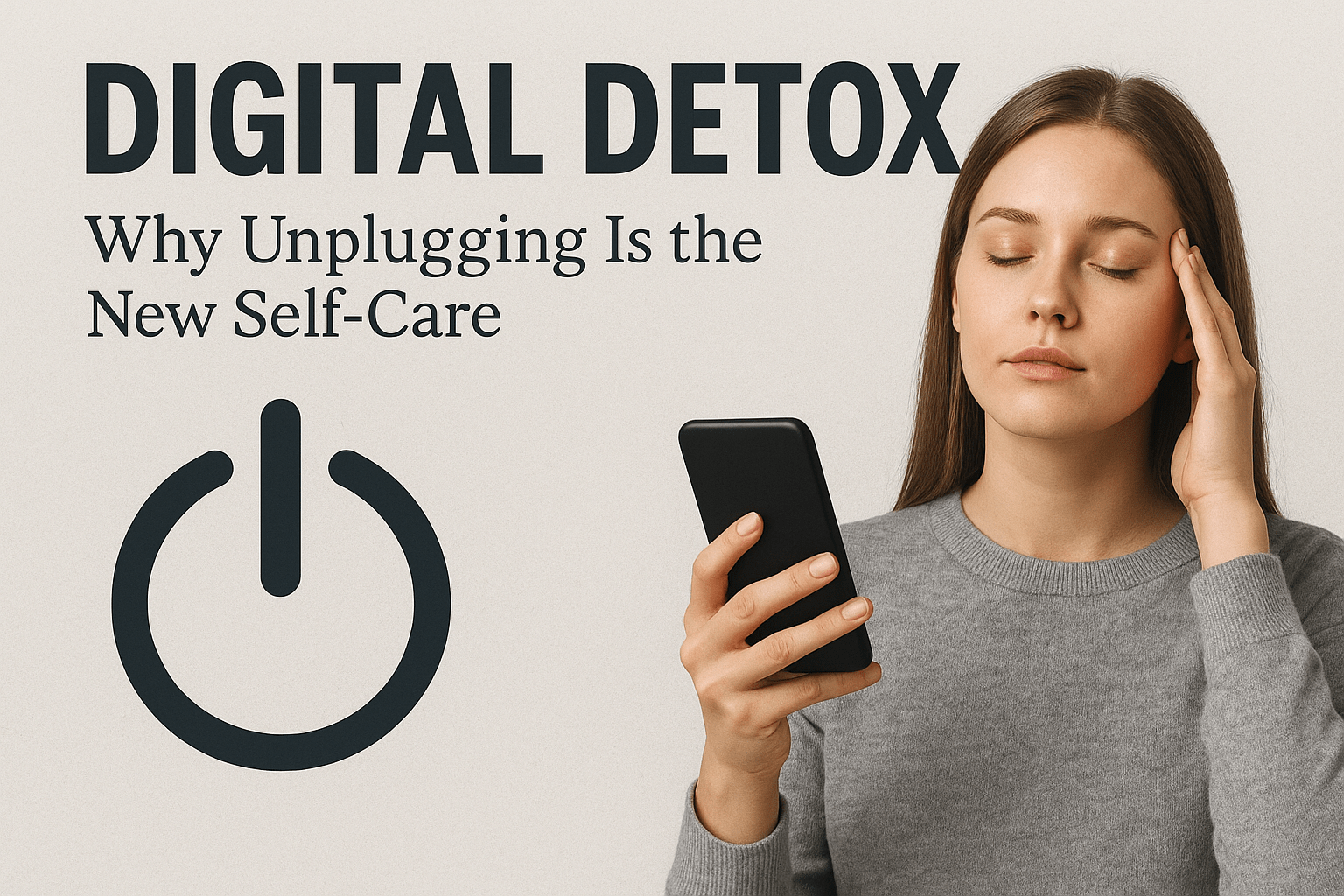In today’s hyperconnected world, our phones rarely leave our hands, notifications never stop, and our minds are always “on.” While technology brings endless convenience, it also drains our focus, sleep, and even relationships. This is why digital detox—taking intentional breaks from screens—has become the new form of self-care.
Why a Digital Detox Matters
Studies show that the average person spends over 6 hours a day on screens outside of work. Constant exposure not only strains our eyes but also elevates stress and decreases productivity. A detox helps reset your brain, reduce anxiety, and improve real-world connections.
Signs You Might Need a Break
- You reach for your phone the moment you wake up.
- You feel restless without checking notifications.
- You multitask endlessly but achieve little.
- You scroll before bed and wake up groggy.
If this sounds familiar, your body and mind are signaling that it’s time to unplug.
Simple Ways to Start a Digital Detox
- Set screen-free hours – Avoid screens the first hour after waking and one hour before bed.
- Use “Do Not Disturb” mode – Silence non-urgent notifications during work or family time.
- Replace scrolling with hobbies – Read, cook, exercise, or pick up a creative activity.
- Try a weekend detox – Go 24–48 hours without social media. Notice how refreshed you feel.
- Create tech-free zones – Keep phones out of the dining area and bedroom.
The Benefits You’ll Notice
- Better focus and productivity
- Improved sleep quality
- Reduced anxiety and stress
- Stronger relationships through face-to-face interaction
- More time for hobbies and self-care
Final Thoughts
A digital detox isn’t about rejecting technology; it’s about using it mindfully. By setting boundaries and making space for real-world experiences, you gain clarity, calm, and deeper connections. In an always-online world, sometimes the best upgrade you can give yourself is logging off.
